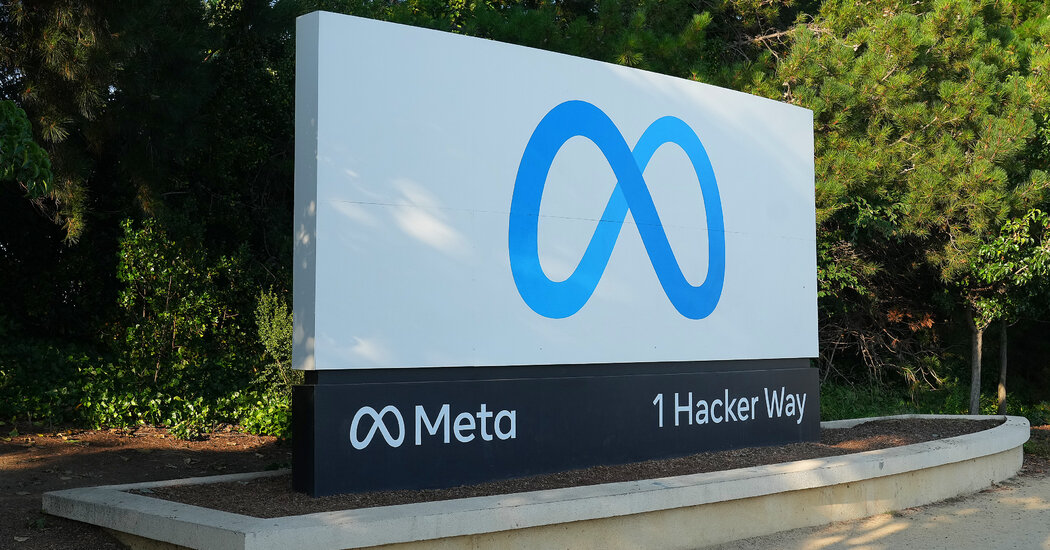Business
Advantages of Actively Managed SMAs Over Crypto ETFs for Institutional Investors
Explore the key advantages of actively managed Separately Managed Accounts (SMAs) over Crypto ETFs for institutional investors. Discover how SMAs offer tailored strategies, enhanced risk management, and potential for superior returns in the evolving crypto landscape.

Exploring the Advantages of Actively Managed SMAs Over Crypto ETFs for Institutional Investors
There’s no denying that cryptocurrency exchange-traded funds (ETFs) have made a significant impact since their introduction in the United States earlier this year, exhibiting potentially record-breaking growth. In this edition, Leo Mindyuk, CEO of ML Tech, delves into the differences between investing in cryptocurrencies through Separately Managed Accounts (SMAs) and ETFs. Additionally, CoinDesk Indices’ Kim Greenberg Klemballa addresses questions regarding SMA ownership and its adoption in the segment titled ‘Ask an Expert.’ – Sarah Morton
You’re reading Crypto for Advisors, CoinDesk’s weekly newsletter that unpacks digital assets for financial advisors. Subscribe here to receive it every Thursday.
The Rise of Crypto in the Mainstream
This year marked a pivotal moment for cryptocurrencies, signifying a leap toward mainstream acceptance as the U.S. Securities and Exchange Commission approved the trading of U.S. ETFs that track spot bitcoin and ether. This groundbreaking decision allowed investors for the first time to trade regulated instruments based on Bitcoin and Ether on official U.S. exchanges. More crucially, it signified that cryptocurrencies had gained the endorsement of securities regulators, shedding their image as speculative assets primarily traded by tech enthusiasts.
Comparing Crypto SMAs and ETFs
While millions of novice investors are exploring cryptocurrencies through bitcoin and ether ETFs, the question for seasoned institutional investors is whether ETFs truly represent the optimal investment vehicle. Separately Managed Accounts (SMAs) provide notable advantages for institutional investors seeking to invest in cryptocurrencies through actively managed portfolios.
Benefits of SMAs Over Crypto ETFs
Understanding SMAs
Crypto SMAs consist of portfolios of digital assets managed on behalf of investors by professional investment managers. The role of a “professional investment manager” is particularly vital in the crypto space, which remains relatively nascent. Unlike traditional stocks, cryptocurrencies don’t trade in the same manner, and their “fundamentals” are not defined by earnings or accounting metrics but rather by a unique set of variables, including blockchain usage, individual activities of significant holders, and more. Therefore, having an experienced active investment manager is invaluable when navigating the complexities of crypto investments.
Direct Ownership: Enhanced Control and Tailored Risk Management
One of the primary distinctions of SMAs is that they provide direct ownership of assets, allowing for greater customization of portfolios to meet specific risk and return objectives. SMAs can be tailored by investment managers to align with individual requirements, encompassing risk tolerance, investment horizons, and financial goals. This direct ownership also facilitates transparent and efficient tax management strategies, such as tax-loss harvesting. Furthermore, SMAs are custody-agnostic, permitting investors to select from a variety of custodians and venues, including Anchorage, BitGo, Coinbase, and Kraken.
Diversification Opportunities
In addition to customization, actively managed SMAs foster diversification. Owning a BTC ETF typically means tracking the performance of Bitcoin exclusively. In contrast, an actively managed SMA allows access to an extensive array of cryptocurrencies (with over 248 cryptos currently listed on Coinbase and more than 200 on Kraken), enabling investors to diversify their portfolios as they see fit. Active management permits adjustments in allocations, which is particularly beneficial in the volatile crypto market, where passive strategies may lead to substantial losses.
Potential for Outperformance
Active management within SMAs can lead to potential outperformance when compared to an underlying coin or coin index. Experienced managers can leverage market analysis, strategic trading approaches, and timely decision-making to capitalize on market fluctuations—advantages that ETFs do not provide. For investors focused on specific coins, SMAs can offer opportunities to generate additional alpha (outperformance) above the underlying coin exposure (beta).
24/7 Trading Advantage
Unlike ETFs that trade only during standard market hours, crypto markets operate continuously, 24/7. This difference is crucial for those who are not familiar with crypto investing. The most notable benefit is the elimination of opening gap risk, which can catch traders off guard. Actively managed SMAs empower managers to respond swiftly to market movements, allowing for timely adjustments to portfolios.
Determining the Right Investment for You
While crypto ETFs are capturing the interest of new investors, trends suggest that institutional investors, high-net-worth individuals, and registered investment advisors are likely to gravitate towards actively managed SMAs in the future. The personalized approach, flexibility, and potential for enhanced returns offered by SMAs make them a compelling option for sophisticated investors.
– Leo Mindyuk, CEO, ML Tech
Ask an Expert
Can I tailor a crypto SMA?
As previously mentioned, the structure of an SMA allows for direct ownership of the underlying assets, enabling customization. For instance, an SMA could be crafted to allocate 50% of a portfolio to Bitcoin and 50% to Ether, based on client preferences. Furthermore, crypto SMAs grant access to a broader spectrum of assets, allowing for exposure beyond just Bitcoin and Ether. Multi-asset support can lead to deeper diversification and more extensive exposure to the crypto asset class, potentially embracing the top 5, 10, or 20 cryptocurrencies.
What are the potential tax benefits of an SMA?
An SMA may provide investors with flexibility for tax-loss harvesting, customization to manage concentrated exposures, and potential tax-advantaged charitable gifting. For more in-depth information on this topic, J.P. Morgan Private Bank has published an informative article. Please note that this should not be construed as tax advice; always consult a tax professional.
How has the SMA market evolved in recent years?
A recent survey indicates that SMAs are gaining traction among advisors. There is a notable shift, with fewer advisors planning to increase allocations to model portfolios while simultaneously intending to raise their allocations to SMAs. As of 2023, assets under management in SMAs have surged to nearly $2.2 trillion.
– Kim Greenberg Klemballa, Head of Marketing, CoinDesk Indices
Business
Bhutan’s Strategic Investment in Bitcoin: A New Era for the Himalayan Kingdom
Explore how Bhutan is embracing Bitcoin as a strategic investment, marking a transformative shift for the Himalayan kingdom. Discover the implications of this move on its economy, sustainability, and future in the digital age.

Buddhist Kingdom’s Bold Move into Bitcoin
A stunning landlocked nation nestled between India and China, Bhutan has made headlines by accumulating significant bitcoin (BTC) holdings totaling over $780 million in recent years. This amount represents nearly one-third of the country’s gross domestic product (GDP), positioning Bhutan as the holder of the fourth-largest state-owned stash of BTC, as revealed by the on-chain analytics tool Arkham.
Known for its unique approach to governance, Bhutan emphasizes the happiness of its fewer than 900,000 citizens as a more meaningful metric of well-being than traditional economic indicators. This Himalayan kingdom has become the second nation, following El Salvador, to officially embrace BTC as part of its national strategy, incorporating it into the state-owned Druk Holdings fund.
According to Arkham, Bhutan has established bitcoin mining facilities across various locations, with the most significant operation situated on the site of the now-defunct Education City project. Unlike many governments that acquire BTC through asset seizures related to law enforcement, Bhutan’s holdings have originated from extensive bitcoin mining activities, which have seen a remarkable increase since early 2023.
These mining operations are likely connected to Bitdeer (BTDR), a prominent player in the cryptocurrency mining sector. In 2023, the Singapore-based firm announced its collaboration with the Bhutanese government to develop cryptocurrency mining operations in Southeast Asia, successfully raising over $500 million for this ambitious venture. Following this announcement, Bitdeer disclosed that it had completed the first phase of a 100 megawatt (MW) mining facility.
Looking ahead, Bitdeer announced plans to expand Bhutan’s mining capacity to a staggering 600 MW by 2025, reflecting the growing significance of this initiative.
Despite its small geographic size, even smaller than Switzerland, Bhutan faces challenges such as limited economic diversification and an underdeveloped private sector. The nation primarily relies on sectors like hydropower, tourism, and agriculture to generate revenue. In 2022, Bhutan’s GDP was recorded at just under $3 billion, approximately half that of the Maldives.
To bolster its economy, Druk Holdings is exploring opportunities across various sectors. The organization’s website highlights “digital assets” as a key focus area in its technology-driven investment strategy, which also includes projects in hydropower and emerging digital realms like the metaverse.
Recent activities in the Druk wallets, as monitored by Arkham, indicate a flurry of deposit and withdrawal transactions in recent weeks. The fund has received multiple deposits of up to 2 BTC from Foundry, another mining entity, as well as from other unidentified bitcoin addresses during the past week. Additionally, Druk Holdings has periodically transferred bitcoin to various addresses, including crypto exchanges. One notable transaction from early July involved a transfer of over $25 million worth of BTC sent to the crypto exchange Kraken, suggesting that it was likely sold to capitalize on market conditions.
Business
Bitcoin and Crypto Markets React to Anticipated Federal Rate Cuts
Explore how Bitcoin and cryptocurrency markets are responding to the anticipated Federal rate cuts. Discover the implications for investors and the broader financial landscape in this insightful analysis.

Bitcoin and Crypto Markets Await Federal Rate Cuts
Bitcoin (BTC) and the broader cryptocurrency markets have seen minimal fluctuations over the past 24 hours as traders remain cautious ahead of the upcoming Federal Open Market Committee (FOMC) meeting on Wednesday. This meeting is particularly significant, as officials are anticipated to announce the first interest rate cuts in four years. Currently, Bitcoin is trading just below $58,500, specifically at $58,480, reflecting a relatively stable performance. The CoinDesk 20 (CD20), a benchmark for the largest digital assets, has experienced a slight increase, trading above the 1,800 mark.
In terms of daily activity, inflows into Bitcoin exchange-traded funds (ETFs) have amounted to $12.9 million, with a substantial portion directed towards BlackRock’s IBIT. Analysts widely expect the Fed to unveil a rate cut on September 18, signaling the beginning of a potential easing cycle that has historically provided support for risk assets, including Bitcoin.
As of Tuesday morning in Asia, the 30-Day Fed Funds futures prices indicate that traders perceive a 67% likelihood of a significant 50 basis points rate cut, bringing the target range to 4.7%-5%. This is an increase from Monday’s implied probability of 50% and a notable rise from the 25% probability reported a month ago. On Polymarket, traders are assigning a 57% chance of a decrease exceeding 50 basis points, alongside a 41% chance of a 25 basis points cut.
Meanwhile, the overall market remains relatively stable. Noteworthy movements have been observed, such as XRP rising by 3.5%, SUI increasing by 2.5%, and Fantom’s FTM surging by 10.5%, buoyed by positive market sentiment surrounding its forthcoming rebranding to Sonic.
Trump’s World Liberty Financial to Introduce WLFI Token
In other news, the team behind World Liberty Financial, a project receiving endorsement from former President Donald Trump and his family, has announced the launch of a governance token. However, it is crucial to note that this token will only be available to accredited U.S. investors. During a livestream that lasted over two hours, the team highlighted that the token is intended for governance participation rather than for economic profit and did not disclose a specific launch date during the X Spaces stream.
Throughout the livestream, Trump himself did not specifically mention the token or provide an endorsement. Instead, he reiterated his general views on cryptocurrency policy, much of which echoed his previous public statements, including those made at the recent Bitcoin Conference held in Nashville.
Figure Markets Launches Exchange with Real Estate-Backed Yields
In a groundbreaking development within the crypto space, Figure Markets has announced the launch of its exchange, coinciding with the Token2049 event in Singapore. Founded by Mike Cagney, a co-founder of SoFi, Figure Markets introduces an innovative method for generating yields for users who store their cryptocurrency on the platform.
According to a recent release, Figure Markets claims it can offer returns of up to 8% for non-USD and stablecoin balances. This is achieved by leveraging a fund backed by real-world assets, particularly home equity loans. The operational model involves traders depositing their funds into Figure Markets, which are then pooled and lent to Figure Technologies for the issuance of secured home equity loans. The interest paid by borrowers on these loans creates a spread that not only covers operational costs but also provides returns to investors. These investors benefit from dual recourse protections, daily liquidity, and interest payments that accrue based on the duration of their investments.
While Real World Assets (RWAs) are progressively becoming a noteworthy aspect of the cryptocurrency industry, there are still very few applications that seek to derive yield from these assets to support their operations. Prior to the launch of Figure in 2023, Cagney had withdrawn the company’s bid for a U.S. federal bank charter amid regulatory scrutiny, opting instead to pursue partnerships with established banks.
Business
Meta Bans Russian Media Outlets Amid Disinformation Concerns
In response to rising disinformation concerns, Meta has imposed bans on several Russian media outlets. This decision highlights the ongoing battle against misinformation and the platform’s commitment to ensuring accurate information for its users.

Meta Takes Strong Action Against Russian Media Outlets
On Monday, Meta announced a significant initiative to prohibit Russian media outlets, including the state-funded television network RT, from utilizing its platforms. This decision comes in light of ongoing scrutiny in the United States regarding these outlets’ involvement in covert influence campaigns designed to manipulate online discourse across various social media platforms.
Meta, the parent company of popular applications such as Facebook, Instagram, and WhatsApp, stated that the ban would be implemented in the coming days. This decisive action marks an escalation in the ongoing efforts to combat Russian state media actors, which U.S. intelligence officials have identified as key players in disinformation operations that span the globe, infiltrating the world’s largest social networking sites.
In a formal statement, Meta expressed, “After thorough consideration, we have expanded our current enforcement measures against Russian state media outlets. Rossiya Segodnya, RT, and other related entities are now prohibited from our applications worldwide due to their involvement in foreign interference activities.”
Recently, U.S. authorities have tightened their grip on RT, particularly for its attempts to meddle in the upcoming presidential election scheduled for November. On Friday, the United States, in conjunction with Canada and Britain, accused RT of functioning as a conduit for Russian intelligence agencies. They announced new sanctions aimed at curtailing international funding sources that support disinformation campaigns globally.
This crackdown follows the federal indictment of two RT employees, who allegedly funneled at least $9.7 million to finance American podcasters on Tenet Media, a video-streaming service based in Tennessee. The goal was to amplify the Kremlin’s propaganda and undermine the integrity of the American democratic process.
Secretary of State Antony J. Blinken emphasized the broader implications of these tactics, stating, “We’re revealing how Russia employs similar strategies globally.” He further noted, “The Russian weaponization of disinformation to destabilize and polarize free and open societies is a challenge that impacts every corner of the world.”
-

 Business4 months ago
Business4 months agoObituary: Dan Collins
-

 Business3 months ago
Business3 months agoThe Significance of Jackson Hole: A Central Banking Tradition
-

 Gaming5 months ago
Gaming5 months agoMore than a thousand students vowed not to work for Amazon and Google due to the Nimbus Project.
-

 World5 months ago
World5 months agoRussia and North Korea Strengthen Defense Ties
-

 Business5 months ago
Business5 months agoJump Crypto Invests $10 Million in Pro-Crypto PAC
-

 Article5 months ago
Article5 months agoCreative Design Applications Developed with Artificial Intelligence
-

 Tech2 months ago
Tech2 months agoNew Leaks and Features About the Samsung Galaxy S25 Ultra
-

 Gaming5 months ago
Gaming5 months agoThe Inspirational Success Story of Avon’s Founder Who Sold Books Door to Door











